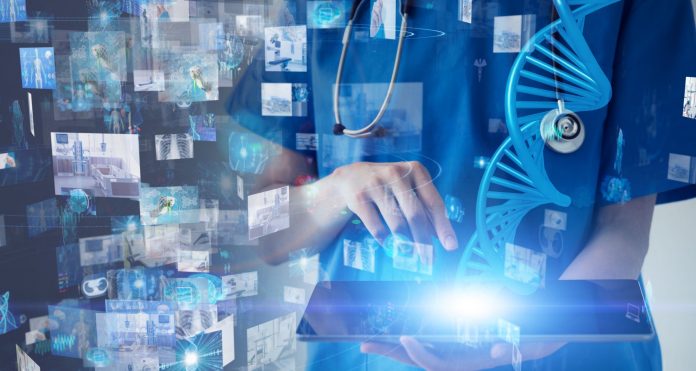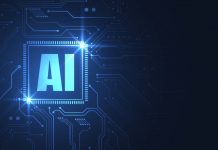This article has been written by Ben Saju Zacaria, pursuing the Diploma in Intellectual Property, Media and Entertainment Laws from LawSikho. The article has been edited by Aatima Bhatia (Associate, LawSikho) and Ruchika Mohapatra (Associate, LawSikho).
Table of Contents
Introduction
The legal rights or the protection available for the works, invention, literal or artistic work innovating from a person’s mind are collectively known as Intellectual Property Rights. They can be divided into two categories.
(i) Copyright and related rights.
(ii) Industrial property.
(i) Copyright and related rights: These refer to the legal rights and protection available for creators of artistic and literary works. These rights can even include musical works and computer codes. These rights help in the monetisation and prevention of unauthorised uses.
(ii) Industrial property: These rights can be further classified into two categories;
- Trademarks and geographical indications: These are the items that are attributed either to their origin or quality.
- Patents, industrial and trade secrets: These are legal rights and protection given to innovations, design and the creation of technologies. These rights prevent unauthorised usages
Except, for trade secrets, all other rights are given for a finite period to inventors/companies.
The past few years have seen a meteoric rise of artificial intelligence (AI) products, services, and applications. Earlier, companies and individual inventors all over the world recognised the importance of AI and began seeking the patent rights of various aspects of AI technology. It wasn’t until 2018 that Dr. Stephen Thaler filed a patent application for a food container and a light-emitting device that identified an AI, known as DABUS, as an inventor. This article seeks to explore the current status of AI inventorship in the US.
Artificial intelligence
Artificial-Intelligence is one of the most advanced and sophisticated branches of computer science; it is used to build smart computers that are capable of performing tasks without human intervention. Their capability is said to be equivalent to that of human intelligence. Some of the mainstream examples of AI are Tesla cars, SIRI, Alexa, Netflix recommendations, etc.
The idea of AI is majorly attributed to Mr. Alan Turing and his seminal work “Computing Machinery and Intelligence” where he argued that there is no convincing argument against the thought that machines cannot think. He created a test, which is still used, commonly known as the Turing Test which one can apply in order to distinguish between the reply of a human and a computer. It was Mr. John McCarthy, in the year 1956, who coined the term Artificial Intelligence during the first-ever AI conference held at Dartmouth College. During that year Mr. Allen Newell, J.C Shaw, and Herbert Simon created the first working AI software known as the logic interest.
2020 witnessed the great effect of AI by the LinearFold AI algorithm introduced by Baidu which helped to develop the vaccine for the SARS-CoV-2 pandemic in its early stages. This software can predict the RNA sequence of the virus in 27 seconds, which is 120 times faster than other existing methods.
Artificial intelligence and patents
AI aided inventions are those inventions in which the inventors are humans and they have invented the product seeking patent with the help of computer AI. Whereas AI-generated inventions are those inventions that are generated by AI, and where AI is the inventor of the product seeking the patent.
Dr Thaler’s DABUS
Until 2018, humans were mentioned as inventors in patent applications that were connected to AI inventions. But, Dr. Thaler filed an application for a patent for a light-emitting device and food containers where the name of the inventor was mentioned as DABUS (Device for Autonomous Bootstrapping of Unified Sentience) which is an AI. Dr. Thaler, along with these applications, had filed an international patent application for both the inventions under the Patent Cooperation Treaty (PCT). In all the applications, DABUS was the inventor and Dr. Thaler remained the owner of the rights.
On the 28th of July 2021, the South Africa Patent journal based on the PCT application allowed the patent without any debate about the non-human inventor. In Australia, while considering the application, the Deputy Commissioner of Patents required that the inventor needed to be a human and added that AI cannot be an inventor. Subsequently, Thaler filed a judicial review and he mentioned that the Australian rules do not avoid AI systems being considered as an inventor. On 30th July of 2021, The Federal court of Australia through the case Thaler v. Commissioner of Patents admitted that AI can be accepted as an inventor in the patent application.
DABUS in the US
Till today, DABUS has not been acknowledged as an inventor by USPTO as per the US patent laws. In 2019, the US Patent and Trademark Office (USPTO) issued a notice to Dr. Thaler stating that he must file the missing parts in the application, i.e he had to update his name as the inventor’s name. Dr. Thaler filed several petitions requesting USPTO to reconsider the notices. Despite every petition, USPTO rejected the applications making AI an inventor through its decision. The decision was based on the fact that the inventor has to be a human being. Aggrieved by this decision Thaler sued Andrew Hirshfeld, the director of the USPTO and the under Secretary of Commerce for Intellectual Property and the USPTO in the Virginia Federal Court.
The argument made by Dr.Thaler was that the attitude of USPTO prevents AI-generated inventions, thus discouraging innovations and encouraging misrepresentation of the inventors for the work that they haven’t done. He added that there is no case or statute in the US mandating that an AI can’t be an inventor. He sought relief for making AI to be listed as a natural person thus reinstating his two applications. In the appeal filed by Thaler, in Thaler v. Hirshfeld the court refused to allow the patent application mentioning DABUS the AI as the inventor of the applied items.
The court affirmed the finding of the USPTO’s denial of the application and referred to the plain statutory language of the US Patent Act and the Federal Circuit Authority found that AI cannot be an Inventor because as per the statutes, the inventor has to be an “individual”, which according to several interpretations and court decisions has to be a human being. The court also additionally stated that Thaler’s arguments were based on policy consideration and the purpose of the patent clause of the U.S Constitution and decided to amend the scope of inventorship. Dr Thaler appealed to the US Court of Appeals for the Federal Circuit.
US patent laws
The patent laws are one of the most advanced patent laws today. By analysing the specific sections of the laws we would get a better understanding of why AI can’t be considered as an inventor. 35 USC 100 of the US Patent Act defines some important words in its list of definitions. As per Section 35 USC 100 (a)11 of the United States Patent Act, the term ‘Invention’ is defined as invention or discovery. The Act defines the term inventor as the individual, or in a joint invention, the individuals collectively who invented or discovered the subject matter of the invention. As per Section 35 USC 116 (a) of the United States Patent Act, Joint inventions are defined as “When an invention is made by two or more persons jointly, they shall apply for patent jointly and each make the required oath, except as otherwise provided in this title.” Inventors may apply for a patent jointly even though
(1) they did not physically work together or at the same time,
(2) each did not make the same type or amount of contribution, or
(3) each did not make a contribution to the subject matter of every claim of the patent.
In the US, an inventor is required to be a human because the inventor engages in the mental step of conception which, according to most respective patent offices or the courts, can only be performed by a human. While AI has developed by leaps and bounds, there is no doubt that there still exists a gap in terms of creative thinking, original thought, etc. Many jurisdictions are of the opinion that these limitations are indeed important to inventorship and until AI transcends these limitations, it continues to be a tool as opposed to an inventor.
While AI doesn’t fit the criteria and parameters of the current definition of the inventor, it is highly likely that within the near future an AI will be able to simulate human thought, think creatively, and independently identify and solve problems. If that happens, AI is likely to satisfy the current definition of what it takes to be an inventor under various laws. If current laws are not changed to accommodate the changing times, AI inventors will not qualify for IP protection.
DABUS has ignited a debate regarding AI inventorship. While on one hand a law can be passed completely restricting AIs as inventors, another option is to make changes and allow AIs to be treated as legal persons. A definite law on the issue might aid in putting an end to the debate and harmonise interpretations of the term “invento.”
Conclusion
35 U.S.C. §§ 100-101 of the US Patent Act defines an inventor as a person who “invented or discovered the subject matter of the invention.” Therefore, the applicant cannot name an AI as the inventor of the co-inventor of a product. Instead, the applicant can still get the patent by mentioning by name the human who produced the product using the AI’s output. This process is still being followed by the technology companies where their work highly relies on automated systems. The companies are hoping that in the current pace of innovation they could add an AI as the co-inventor, where they have made the invention with the help and assistance of the systems. The tech giants believe that it would not take much time for the US Congress to make a favourable decision recognizing AI as an inventor and allowing AI to be named as an inventor in the patent application.
References
- Recent Trends in AI-related Inventions: https://www.jpo.go.jp/e/system/patent/gaiyo/ai/ai_shutsugan_chosa.html
- STEPHEN THALER v. ANDREW HIRSHFELD: https://www.dwt.com/-/media/files/blogs/artificial-intelligence-law-advisor/2021/09/thaler-v-hirshfeld-decision.pdf
- DABUS Will Need to Wait—U.S. District Court Affirms USPTO’s Denial of AI System as Inventor by Scott Adams, Barry Stulberg. https://www.jdsupra.com/legalnews/dabus-will-need-to-wait-u-s-district-7992231/
- Patentability of AI-Generated Inventions –Is a Reform of the Patent System Needed?: https://www.iip.or.jp/e/summary/pdf/detail2017/e29_02_Ramalho.pdf
- When Artificial Intelligence Systems Produce Inventions: An Alternative Model for Patent Law at the 3A Era by Dr Shlomit Yanisky Ravid & Xiaoqiong (Jackie) Liu: http://cardozolawreview.com/artificial-intelligence-systems-produce-inventions/
- ‘AI-Generated Inventions’: Time to Get the Record Straight? By Daria Kim.: https://academic.oup.com/grurint/article/69/5/443/5854752#204487437
- On the horns of a dilemma: Inventorship of AI-generated inventions by Prashanth Shivadass, Rachana Pise: https://www.barandbench.com/view-point/the-viewpoint-on-the-horns-of-a-dilemma-inventorship-of-ai-generated-inventions
- United States: Artificial Intelligence As The Inventor Of Life Sciences Patents? by Xin Hu Rasmussen and Baldassare Vinti. https://www.mondaq.com/unitedstates/patent/1101942/artificial-intelligence-as-the-inventor-of-life-sciences-patents
- Artificial Intelligence as the Inventor of Life Sciences Patents? By Xin Hu Rasmussen & Baldassare Vinti. https://www.proskauerinlifesciences.com/2021/08/artificial-intelligence-as-the-investor-of-life-sciences-patents/?utm_source=Mondaq&utm_medium=syndication&utm_campaign=LinkedIn-integration
Students of Lawsikho courses regularly produce writing assignments and work on practical exercises as a part of their coursework and develop themselves in real-life practical skills.
LawSikho has created a telegram group for exchanging legal knowledge, referrals, and various opportunities. You can click on this link and join:
https://t.me/joinchat/L9vr7LmS9pJjYTQ9
Follow us on Instagram and subscribe to our YouTube channel for more amazing legal content.
 Serato DJ Crack 2025Serato DJ PRO Crack
Serato DJ Crack 2025Serato DJ PRO Crack











 Allow notifications
Allow notifications



